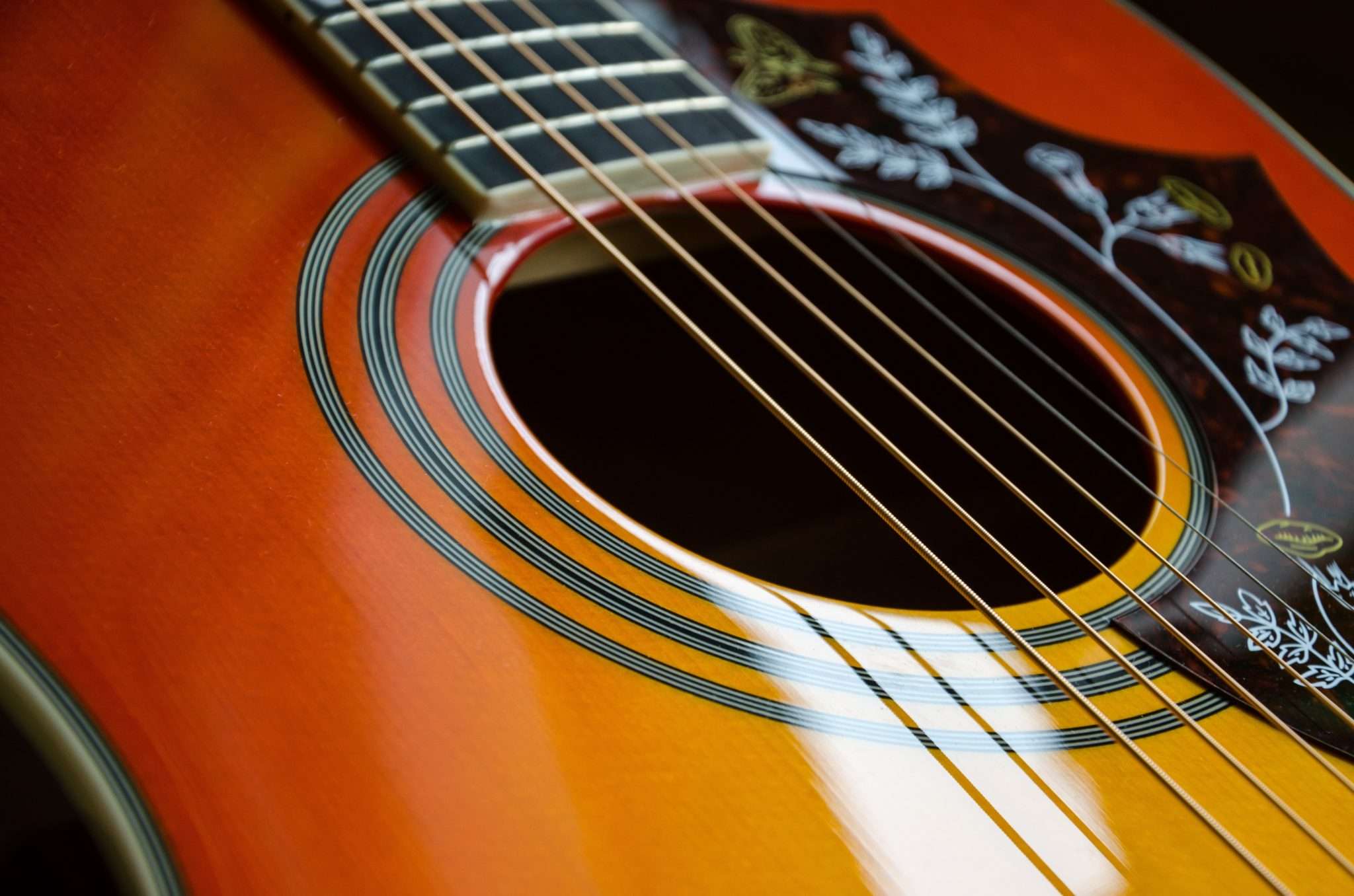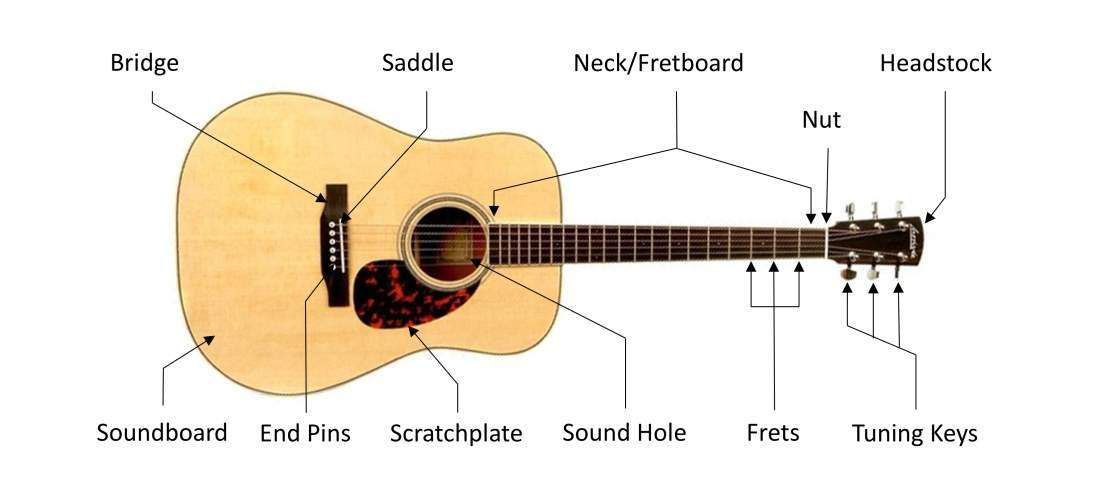
Many novices or amateur guitarists can find the mechanisms and components of the guitar confusing, with probably the most puzzling being how to adjust the action on an acoustic guitar.
That’s why we’ve put together this guide to help you learn how to adjust the action on your acoustic guitar.
What Is The Action On An Acoustic Guitar?
The action of an acoustic guitar refers to the height of its strings above the fretboard, which is the area the fingers are placed to alter the pitch that the strings produce. The term is also used to describe the overall playability and feel of a guitar.
A guitar’s string height is usually measured at the twelfth fret. This central measurement provides a good point of reference so that one is able to tell how high above the fretboard the strings are.
Action can also be measured at the first fret. For example, when a guitar is said to have ‘high action,’ it means that the strings are too high above the fretboard, while ‘low action’ means the opposite – the strings are too close to the fretboard.
You may be asking yourself, ‘Why is action important?’ Great question. Action is perhaps the most crucial aspect of any guitar setup.
When you correctly adjust the action on an acoustic guitar, this helps with the playability and comfort, as well as helps the guitar to maintain its intonation and overall tuning.
The action of an acoustic guitar is slightly different from the action of an electric guitar in that the strings of an acoustic need more space to vibrate.
You do not need to strum very hard while playing an electric guitar to produce a big sound – the amplifier does most of the work. This is not the case with acoustic guitars.
So, how do you adjust the action on an acoustic guitar? Adjusting your acoustic guitar’s action involves far more than merely turning an Allen wrench. You may need to adjust it in more than one way, depending on what is wrong with your instrument.
Usually, the cause of a high or low action can be fixed with a truss rod adjustment, which is quite simple. The change should be rather simple, as long as you have not dropped your guitar, or done anything to damage the nut or neck.

How To Adjust The Action On An Acoustic Guitar
There are generally three steps involved when you adjust the action on an acoustic guitar, which include checking and possibly adjusting three separate areas of your guitar, namely the truss rod, nut, and bridge.
Adjusting The Truss Rod
The truss rod of an acoustic guitar is a threaded metal rod that is inlaid within the guitar’s neck. This unique rod aids in supporting the neck and also keeps it straight.
The truss rod can be loosened or tightened in order to flatten or straighten the neck of your acoustic guitar. Not all acoustic guitars have truss rods, and the imperfect action on your instrument is most likely because of the alignment of its neck.
Be sure to check your action and adjust the truss rod accordingly, and if you do adjust the truss rod, and your action is where you want it to be, you do not need to proceed to the next two steps.
Adjusting The Nut
Once you have altered the truss rod of your acoustic guitar, and you are satisfied with the alignment of your neck, you can measure the string height with a ruler once again.
Merely straightening your guitar’s neck does not always solve the issue, which is why checking the action in the nut is essential as well.
The action at the nut is measured from the first fret, and the standardized measurement of this distance is around .06 inches. If the strings are higher than this, you are going to have to file the nut down.
Adjusting The Bridge
The final step when you adjust the action on an acoustic guitar is to check the action at the bridge and adjust it accordingly. The majority of acoustic guitars possess one saddle that spans the bridge and will need to be taken out and altered.
This may sound like a daunting task, but it is rather easy to do if you have the know-how.
Why Do Guitar Actions Move?
There are several factors that can cause the action to move, most of which are unpredictable and uncontrollable. This is why it’s important to know how to adjust the action on an acoustic guitar.
Temperature
Guitars are affected by humidity and temperature, just like all wooden objects are. Acoustic guitars are especially susceptible to these factors, and rapid changes in heat and moisture will cause the action to change.
String tension
Strings place quite a lot of strain on the guitar’s neck, and can thus change its action. Changing from low to high tension can cause the back relief or bow in the neck.
Use
Guitars are obviously meant to be played, and the simple act of playing on your guitar regularly can cause its action to change. This is very common in acoustic guitars.
Conclusion
So, now you know just how important adjusting your guitar’s action is, and how to adjust the action on an acoustic guitar. Follow the steps and tips mentioned above, and you’ll be adjusting your guitar’s action as the pros do in no time.
